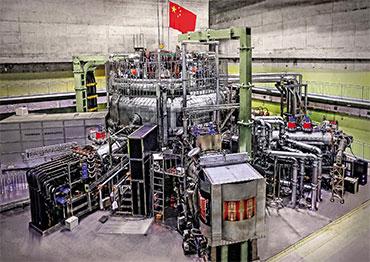According to Li Liang, a professor at the School of Physics and Astronomy at Shanghai Jiao Tong University, it is time to reform China’s funding structures for innovation, which he said excessively focuses on performance-oriented project funds.
The current system was established in the 1980s and 1990s, as China transitioned from a planned to a market economy. Given the limited resources at the time, the system was designed to maximize research funds to fuel rapid economic development. Li explained this resulted in more applied research, which can generate short-term profits faster, and a performance-oriented funding system.
Under the current system, basic research is mainly funded by the central government through agencies such as the Ministry of Science and Technology and the National Natural Science Foundation of China (NSFC).
Researchers obtain their funding through competitive projects. Li said that such a mechanism has led to fierce internal competition among scientists, which has skewed the funding structure of the science community. “It led to a Matthew effect where a small number of top scientists have sufficient funding while young scientists struggle to get funded and are often marginalized over time,” Li said.
His concerns are widely shared in the science community. Zhuang Ci, an assistant professor at the CAS Institute of Theoretical Physics, told NewsChina that a major problem is that scientists lack long-term stable funding. This particularly affects basic research, which she said requires long-term input to yield results.
Zhuang worked on a CAS project in 2019 that compared China’s funding system to those in developed countries. She said that in Japan, the government provides universities and research institutes with funding to cover scientist and researcher salaries, but researchers can also secure funding exclusively for academic activities.
By comparison, China’s project-centric funding system lacks stable funding for researcher salaries. Instead, their incomes come from project funding, which is particularly discouraging for young researchers and postgraduates.
Zhuang also said that compared to Japan, South Korea and Canada, where 70-80 percent of funds research institutions receive from the government are stable funds, the ratio in China is only about 20 percent. For example, in 2022 the CAS Institute of High Energy Physics had a budget of 2.57 billion yuan (US$362m), mostly from the government. Only 17 percent are stable funds, while 81.8 percent came from competitive project-centric funds.
“The nature of basic research is that it is fundamental but unpredictable and requires long-term investment, and a funding system that centers on competitive projects is not suited for basic research.” Zhuang said, “China needs to substantially increase the proportion of long-term and stable funding.”
Zheng Xiaonian, a CAS researcher, told NewsChina that the lack of long-term funding has not only resulted in anxiety over future financing among researchers but has led to inefficient use of funds.
Zheng said that as director of CAS’ Bureau of Conditions and Finance from 2018 to 2019, he found many researchers squirreled away large portions of their funding. “When I asked them why, they said that they needed to have some ‘reserve funds’ as they were unsure whether they would get funding the next year,” Zheng said.
In response, authorities launched several initiatives to increase long-term support for basic research. In 2016, the NSFC launched the Basic Science Center project, focusing on frontier and cross-disciplinary researchers. The foundation pledged 200 million yuan (US$28m) for the first five years, and 60 million yuan for the next five.
But the scale and scope of these initiatives are too small to make a significant impact, researchers said. Zhou Zhonghe, a scientist at the Institute of Vertebrate Paleontology and Paleo-anthropology at CAS who received funding from Basic Science Center in 2016, told NewsChina that although the project aims to provide stable long-term funds, the scarcity of such projects means that it ended up being highly competitive as well.
According to CAS academic Wang Yifang, a major reason behind China’s stagnating reforms is that China’s research policy is overseen by several independent agencies, including the Ministry of Science and Technology, the NSFC and the National Development and Reform Commission.
“They lack the motivation and ability to make systemic reforms,” Yang said, “The result is sporadic and fragmentary reforms.” Yang believed that the newly established Central Committee of Science Technology will address these issues.

 Old Version
Old Version

